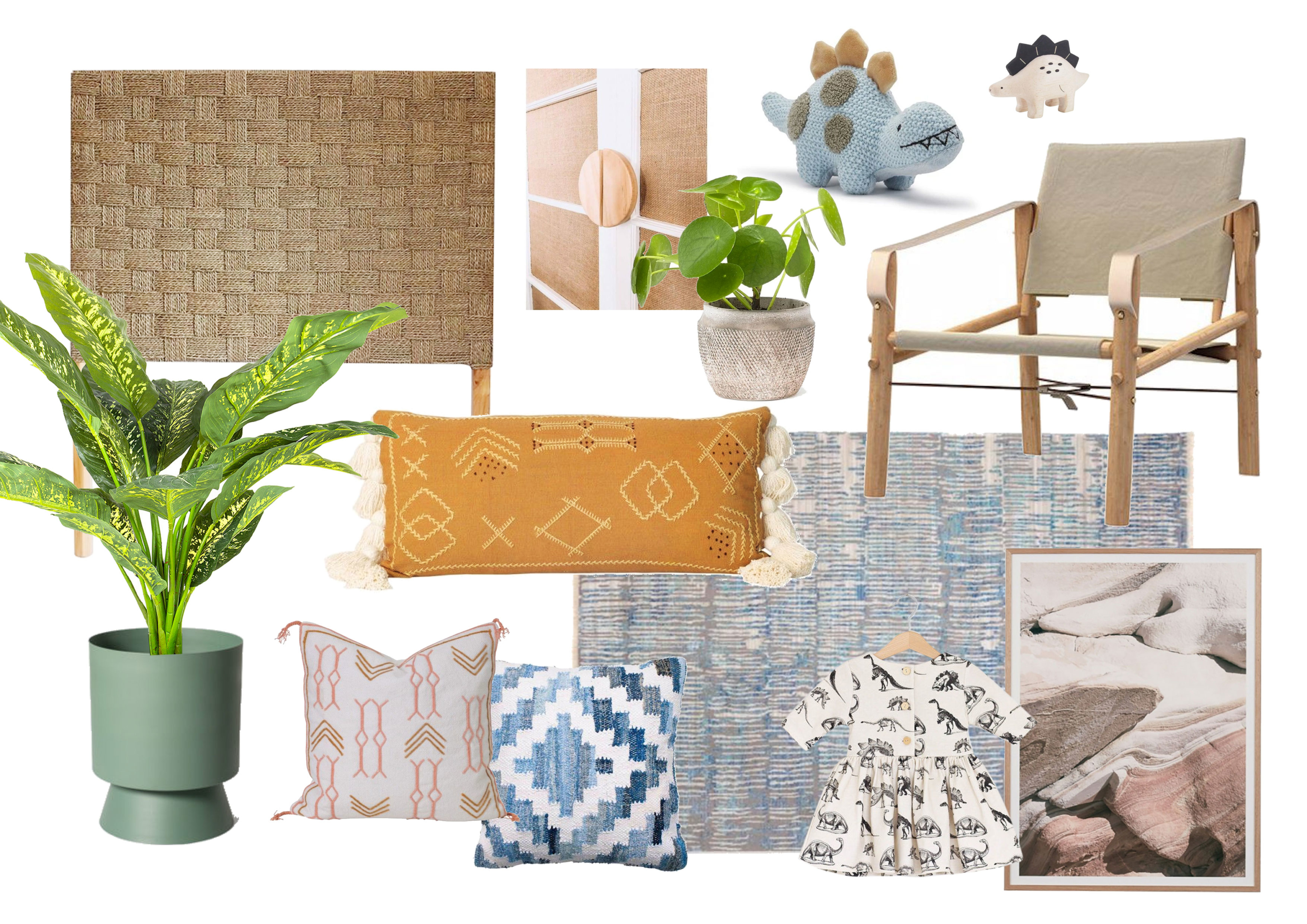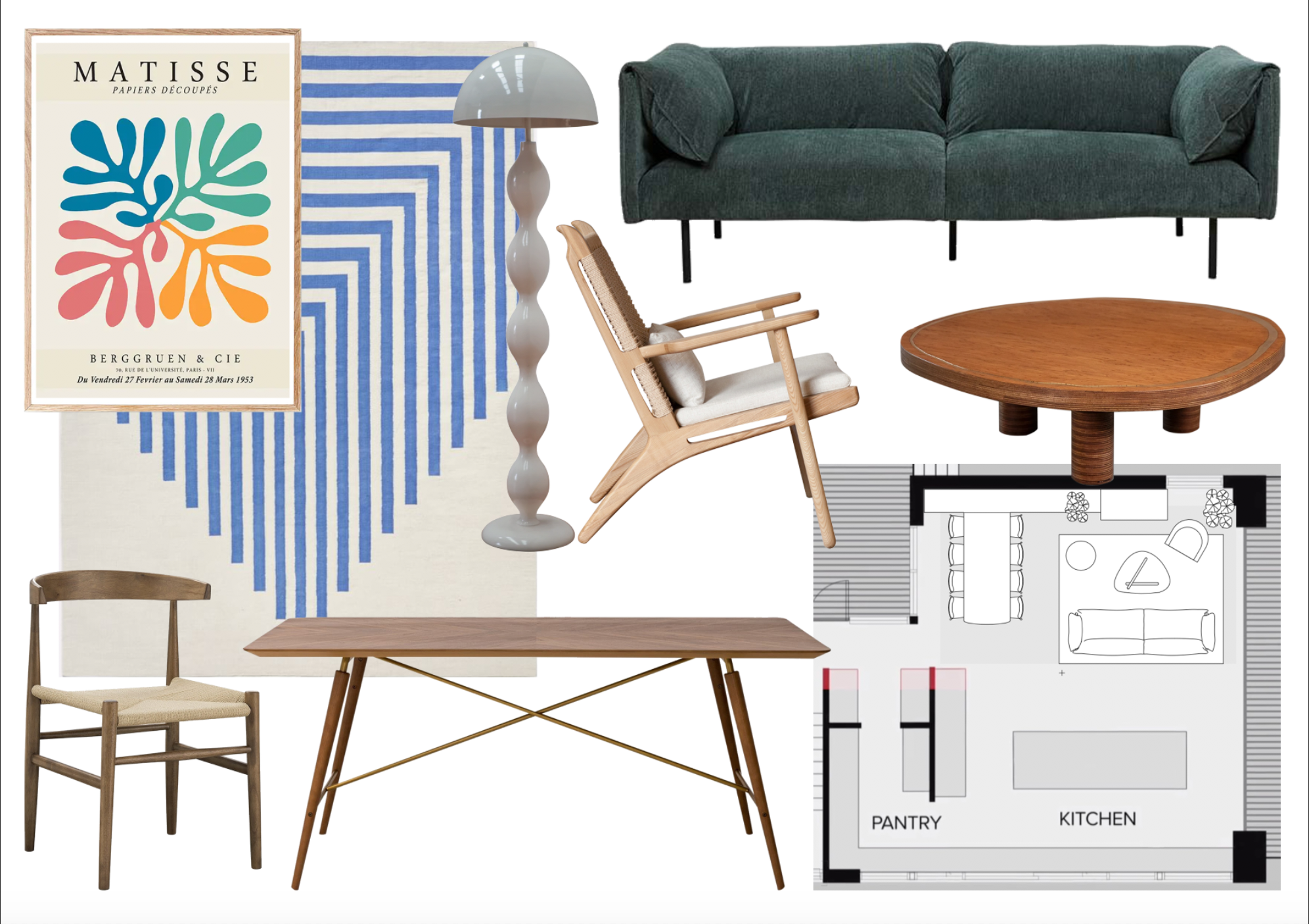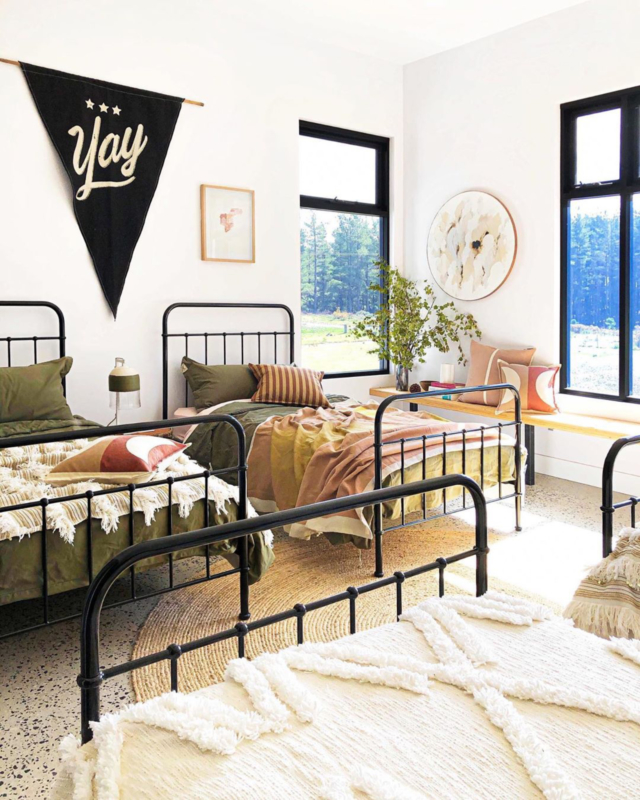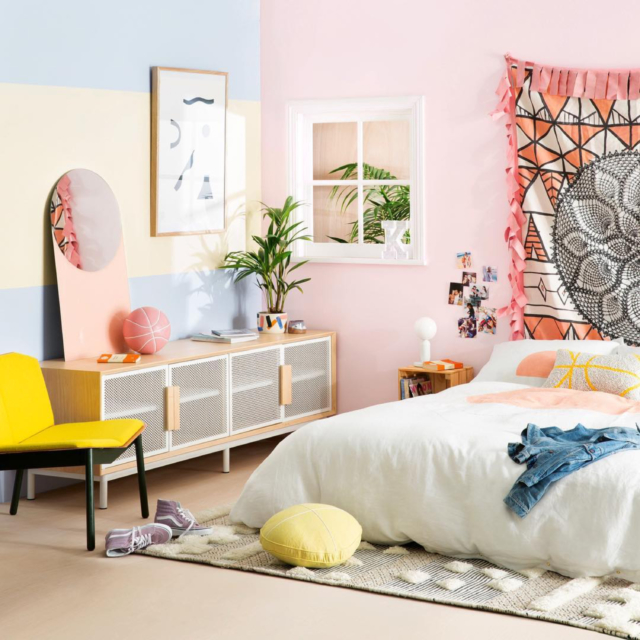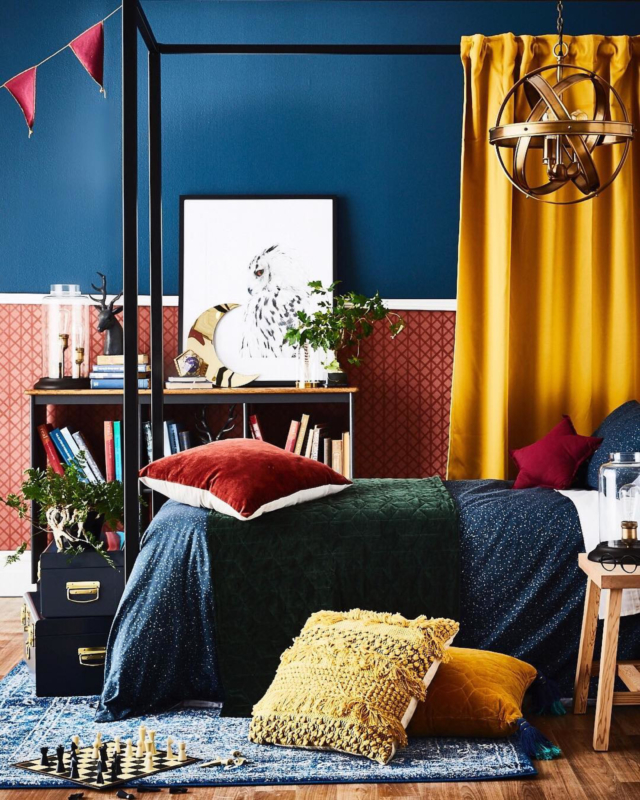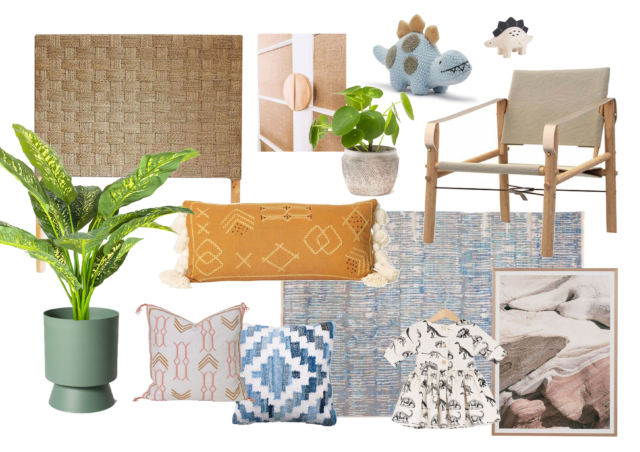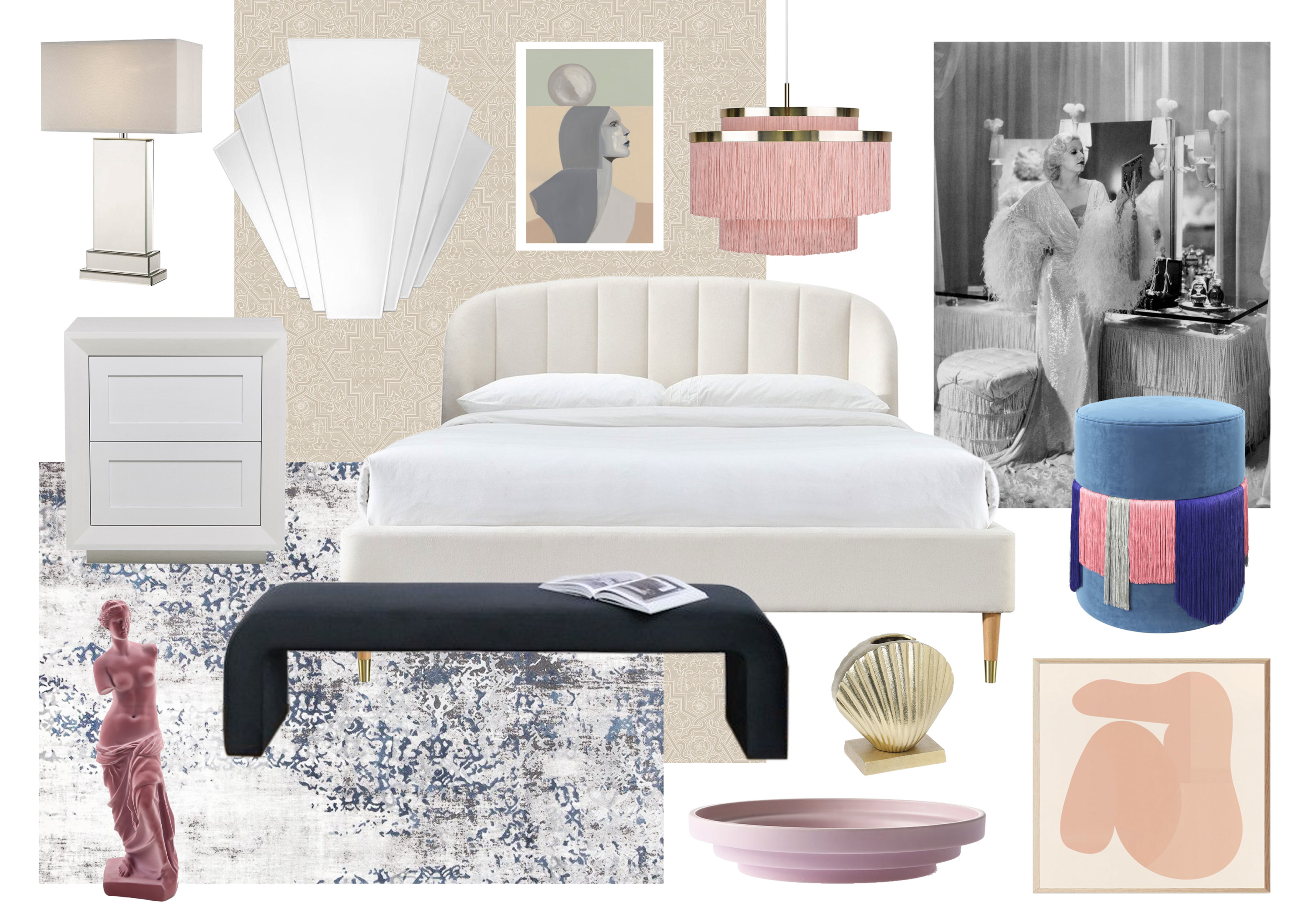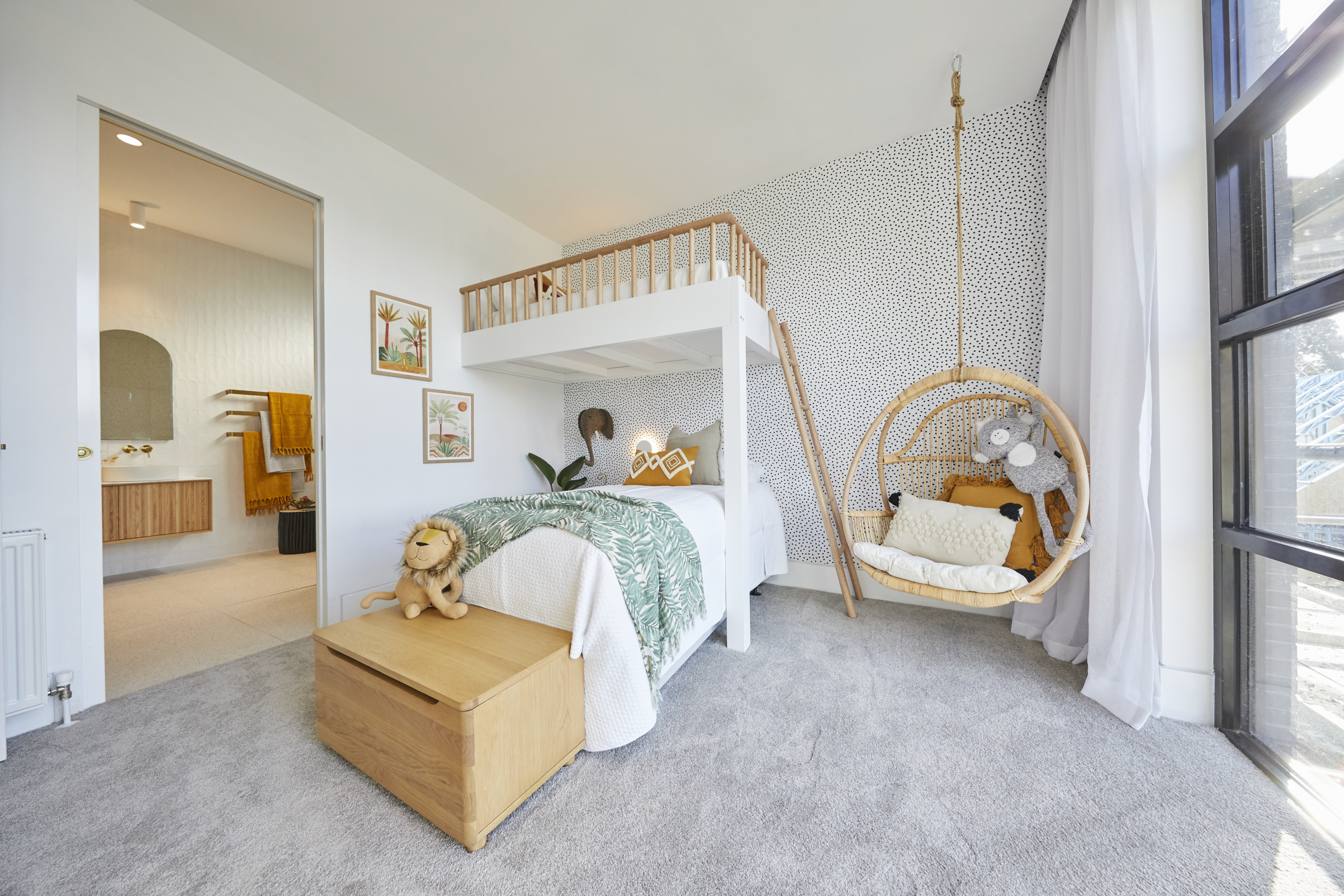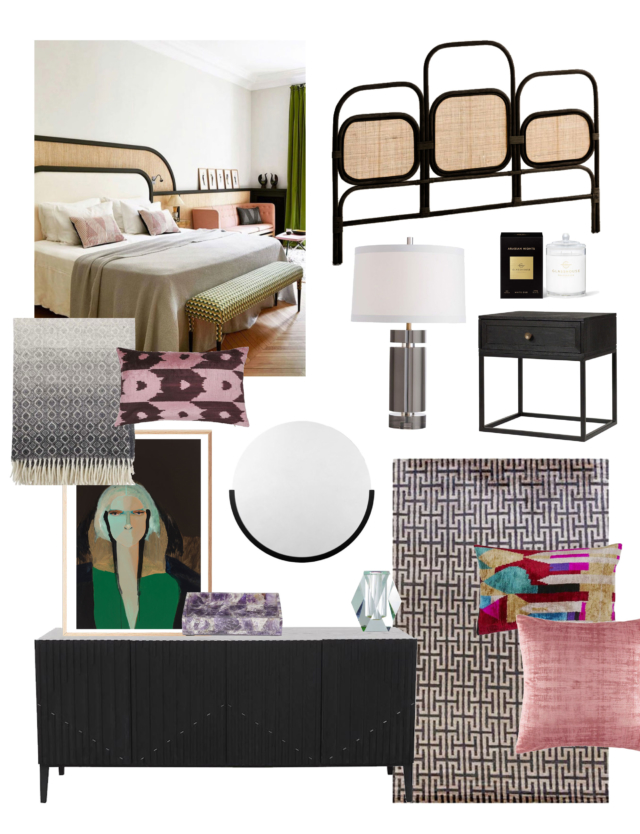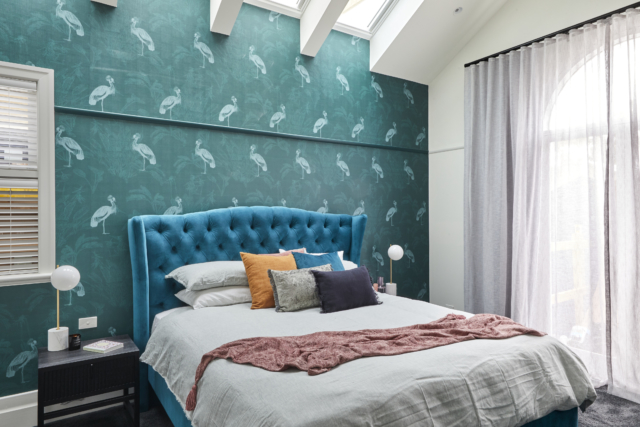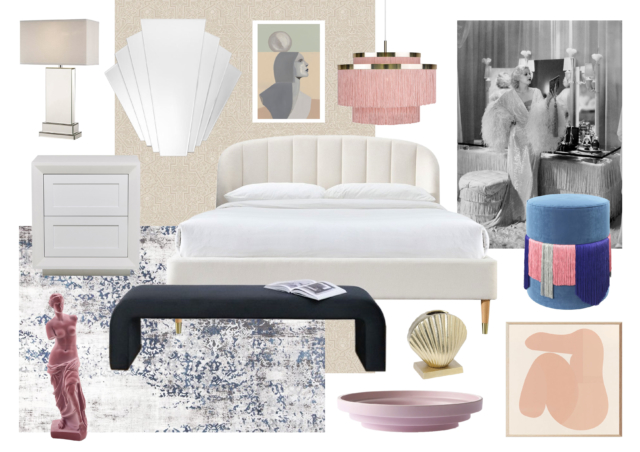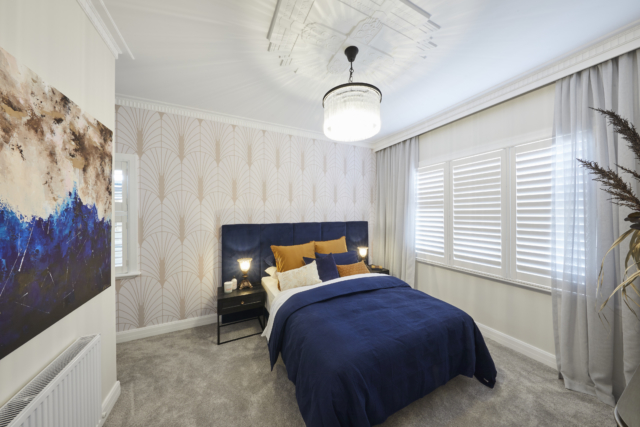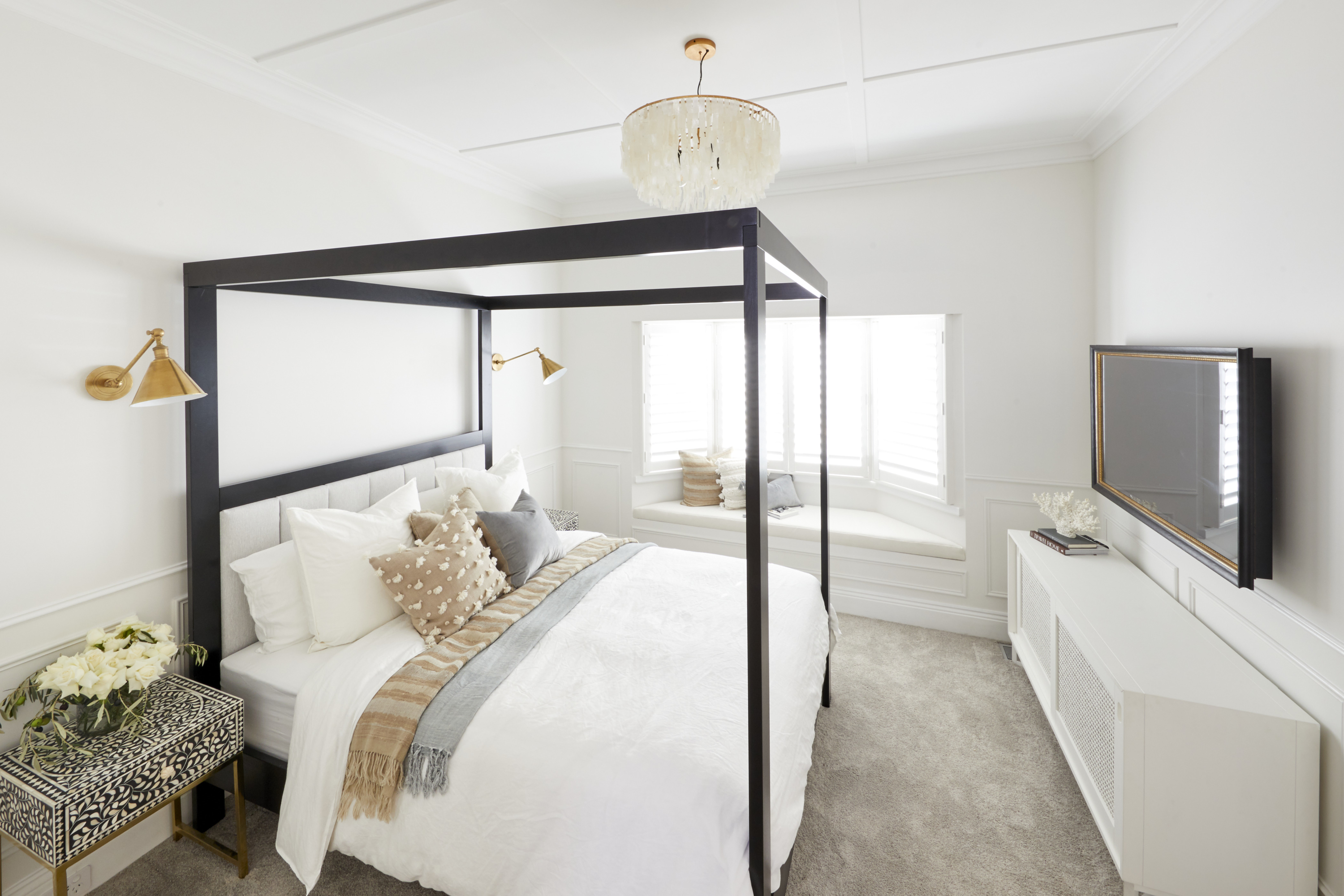Interior designer and stylist Jono Fleming has been a busy bee this week, taking Jimmy and Tam’s lowest-scoring living/dining room and coming up with not one but two alternative layouts!

Another week and another room reveal has come and gone on The Block and look, maybe I’m a little biased because I have a very loud (but curated) colourful living room, but everything seemed a little bit safe and generic on Sunday night. It seems that all the teams have thrown away any semblance of referencing specific eras which is a real shame because there are some really beautiful inspiration ideas they can take from these decades.
Today though, I’m focusing on our lowest scoring team of the evening and that is the Jimmy and Tam and the 1950s house. They made a bold call not to include a dining table in their space and it didn’t pay off. It was an odd choice because there was in fact plenty of space in their room so let’s unpack the 1950s living room a bit and see what other options they could have gone with.
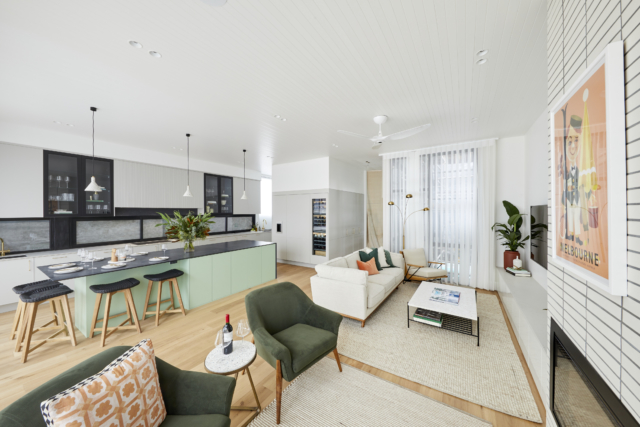
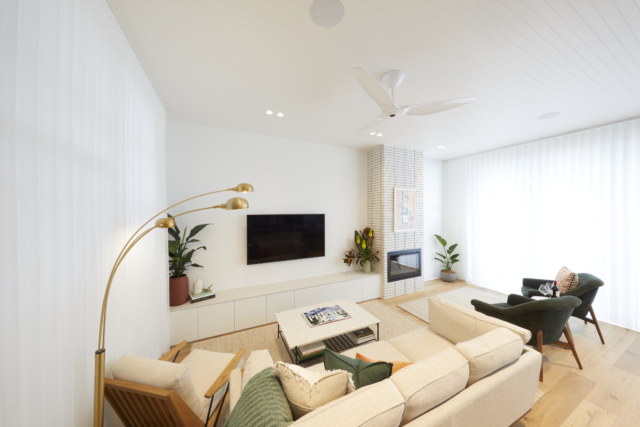
The 1950s saw a boom of the model home and people started to have more space in their homes and living areas. The furniture was less stuffy and ornate than the eras before, it was all about bolder colour, timber frames and interesting shapes. Curved sofas became a way to create flow around a room, with organic shaped coffee tables adding to the free form furniture design. Influence from Scandinavia was here and teak framed armchairs with felt or woolen fabrics dominated every home. It’s an often referenced era in design, the real start of the ‘mid century modern’ look.
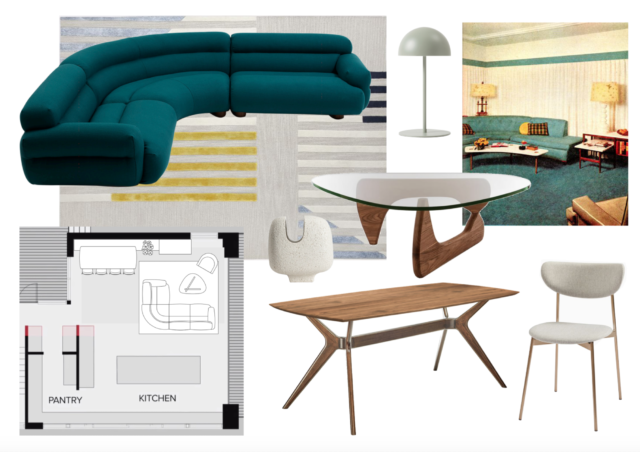
To take this into a modern age is really simple. The 1950s room reveal had some great reference points in their build. The brick fireplace was inspired and really hit the nail on the head for the era, the armchairs from Freedom were very appropriate but then the rest fell a bit flat. The 50s introduced bolder colour to the home, sofas were no longer only floral prints, they were big, bright, deep tones. Yellows, reds and teals were all of the norm. Darren Palmer suggested the Valley sofa from Jardan which happens to come in the most divine teal however, Jardan is all custom made (all made in Australia!) and comes with long lead times so that probably wouldn’t suit for the quick timelines on The Block. However, curved sofas are starting to pop up through many different brands. It helps create flow in a room and makes it less boxy.
To solve the dilemma of not enough space for a dining table, the team could go with the option to build in their seating in a banquette on one side. It not only saves space but you can include storage underneath the seat, and it looks extremely bespoke to have a custom piece of joinery like this. Neale Whitaker made a big point about lamps in the homes and I couldn’t agree more. Lamps in the 50s in particular were extremely important. They went from being solely functional to extremely decorative. There are so many interpretations on the market of retro and updated lighting, we’re truly spoilt for choice!
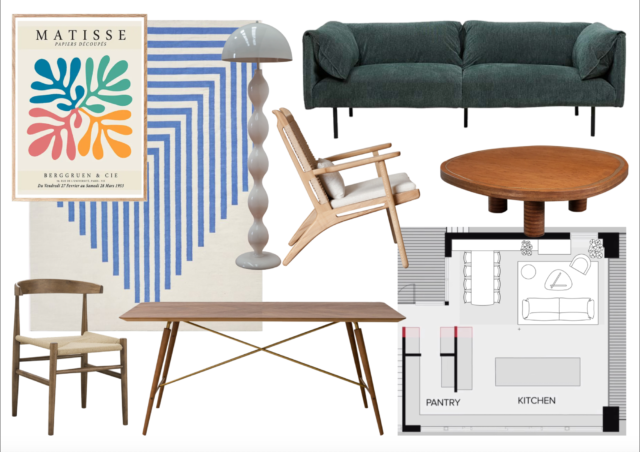
Getting the right layout in a room can be hard. The key is to approach it in different ways, the obvious plan may not work. By switching it up, playing around, and looking to the past for different design ideas, it can all help to create a unique and functional design for your home, packed with personality.
For more on Jono | Follow him on Instagram
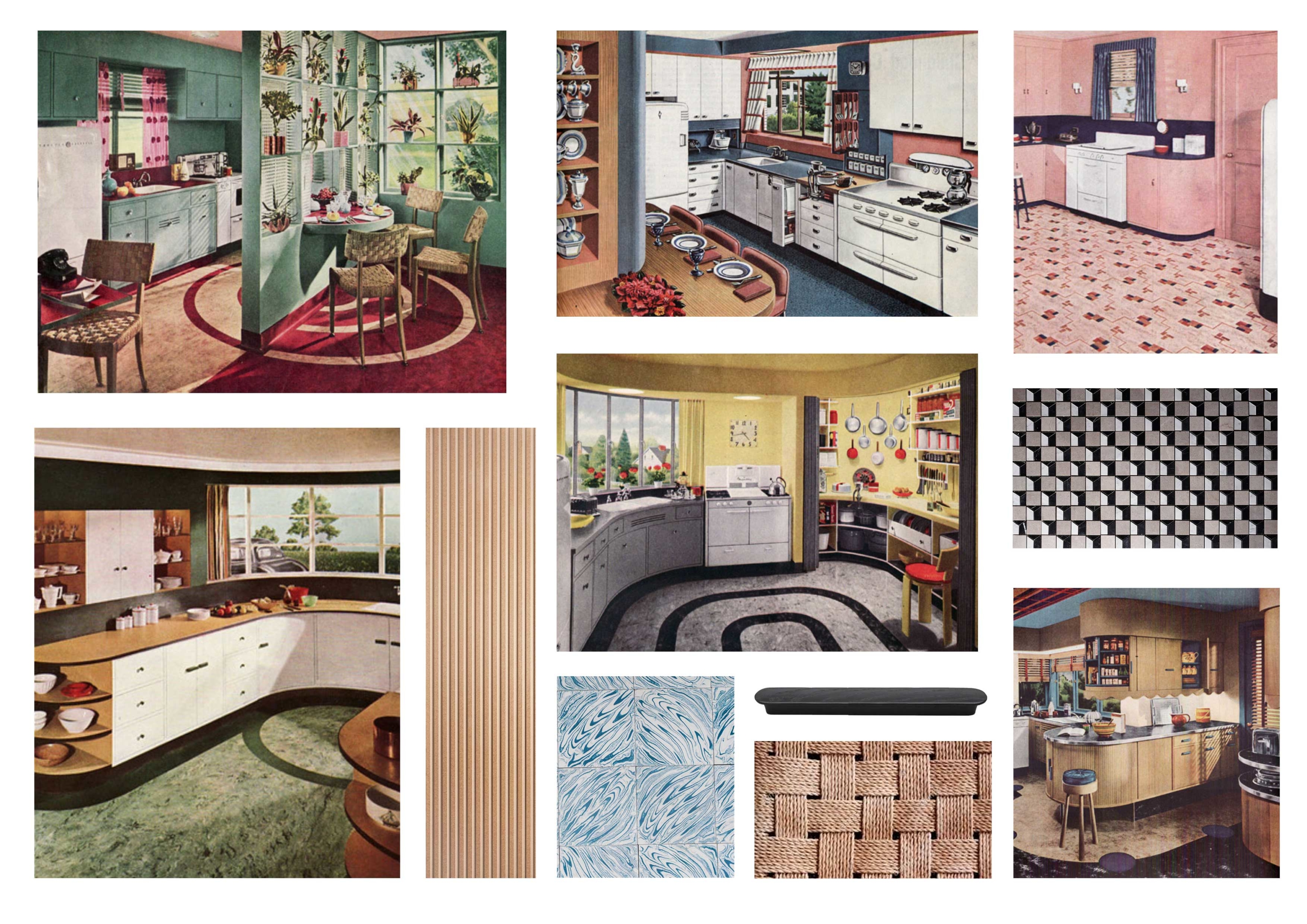
The Block 2020 kitchen week: What Would Jono Do?
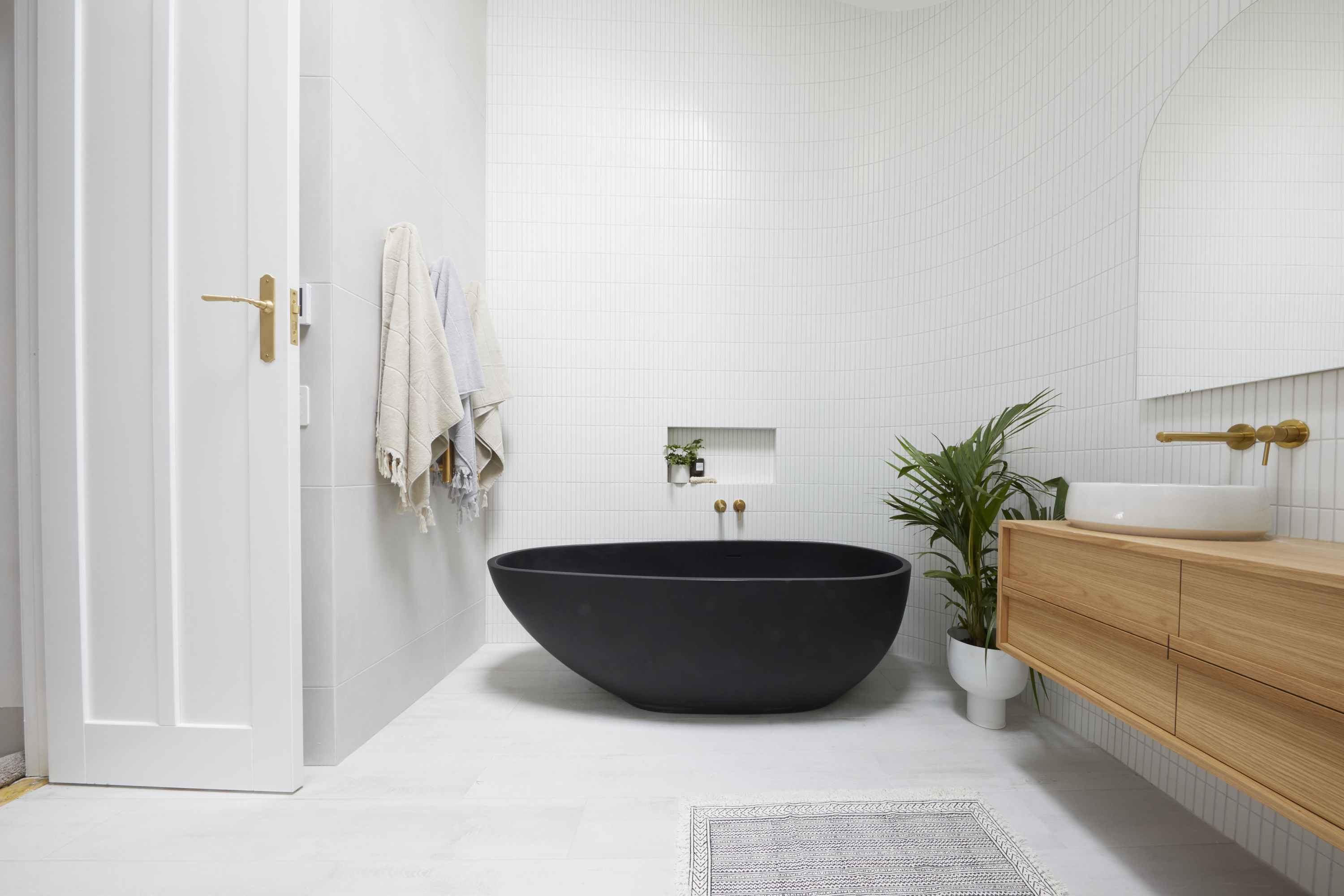
What would Jono do: bath tubs over the decades
